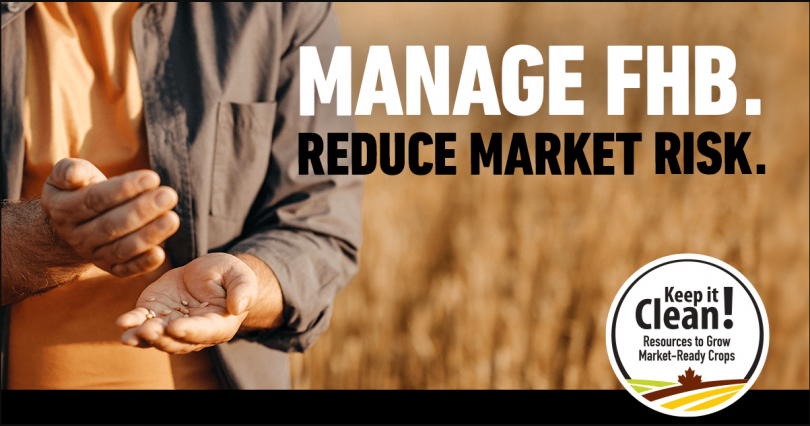Keep it Clean is encouraging cereal growers to stay ahead of fusarium head blight (FHB) by taking a proactive approach to managing the disease this growing season.
“It is important for all wheat, barley and oat growers to put together a proactive plan to manage the disease and remain vigilant, employing as many FHB management best practices as possible,” says Brenna Mahoney, director of communications and stakeholder relations with Cereals Canada. “By taking steps to manage the disease, producers can limit the presence of the mycotoxin deoxynivalenol (DON) in their harvested grain and protect its marketability.”
Commonly known as vomitoxin, DON can be produced when the fungal disease FHB infects cereal crops. Its presence can limit grain’s end uses and marketing potential, as most importing countries have strict limits on DON levels. Shipments that exceed acceptable levels of DON could be rejected, at tremendous cost to the industry, and may impact Canada’s reputation as a producer of high-quality cereal grains.
FHB can be identified by premature bleaching and salmon-coloured fungal growth on the heads of crops it has infected, with symptoms showing up approximately three weeks after infection.
To help keep marketing options open for their harvested grain and maximize return on investment, Keep it Clean recommends growers use the following practices to manage FHB:
- Grow the most FHB-resistant varieties available in areas at risk for FHB.
- Plant clean seed and consider a seed treatment in high-risk areas.
- Scout for stage, not symptoms, and apply fungicide when there is an elevated risk of FHB.
- If FHB is identified, send samples of harvested grain for testing to detect the presence of mycotoxins, such as DON.
- Rotate away from cereals on FHB-infected fields for 1-2 years.
- Use a combination of best management practices to control fusarium.
As part of their FHB management plan, growers are also encouraged to make use of the materials available through provincial commodity groups and agricultural departments, including risk maps, to inform their decisions and help to limit the spread and severity of outbreaks.
“By keeping fusarium damaged grain and mycotoxins to a minimum, growers are protecting their investment and protecting market access for all,” says Mahoney. “When we all work together to protect Canada’s reputation as a trusted supplier, it helps our entire industry thrive.”


